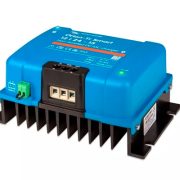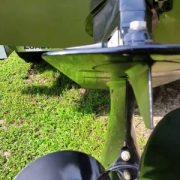A workboat is a type of vessel specifically designed to perform various tasks related to marine operations and commercial industries. Unlike recreational boats, which prioritize comfort and leisure, workboats are built to endure challenging environments and carry out heavy-duty work. These vessels are essential for many industries, including construction, oil and gas, aquaculture, environmental services, and emergency response.
In addition to various commercial and industrial applications, a workboat—often self-propelled and powered by diesel motors—is defined as a vessel specifically designed for work rather than leisure. These boats are commonly used for tasks such as tugging larger vessels, providing navigation assistance, and supporting industrial tasks like surveying, drilling, and transporting cargo or medical supplies. Workboats like tug boats and ferries play a vital role in reducing the risk of collisions, assisting in rescue missions, and facilitating offshore activities, ensuring that ships used in maritime operations can pass safely through smaller ports and challenging waters.
Key Characteristics of Work boat
Workboats are designed with functionality and durability in mind. Here are some of their main characteristics:
- Robust Construction: Workboats are often made from durable materials like steel or aluminum to withstand harsh marine conditions, including rough seas, debris, and corrosive saltwater. This robust construction allows them to carry heavy loads and operate in demanding environments.
- Functional Layout: Unlike pleasure boats, workboats have a layout that prioritizes efficiency and functionality. They typically feature open decks, spacious holds, and customizable areas to accommodate specialized equipment such as cranes, winches, and storage tanks.
- Power and Endurance: Workboats are equipped with powerful engines to handle challenging tasks such as towing, pushing, and maneuvering large vessels. They are designed for extended operations, often including larger fuel tanks, extra storage for provisions, and accommodations for crew members to stay on board for longer missions.
- Specialized Equipment: Workboats are commonly fitted with equipment specific to the type of work they perform. For instance, a dredging workboat may have dredging pumps and suction pipes, while a fireboat may include powerful water pumps and nozzles for firefighting.
Types of Workboats
Workboats come in various shapes and sizes, each tailored to specific tasks. Here are some of the most common types:
- Tugboats: Tugboats are powerful vessels used to tow or push other vessels, such as barges and larger ships. They are essential in harbors, rivers, and ports, where they help move ships safely and assist in docking.
- Crew Boats: These boats are designed to transport crew members to and from offshore platforms, especially in the oil and gas industry. Crew boats are typically fast, comfortable, and capable of carrying supplies and personnel over long distances.
- Pilot Boats: Pilot boats are used to transport maritime pilots to and from large ships that are entering or leaving a port. These boats are built to operate in rough waters and maneuver easily, ensuring safe and timely transfers.
- Research Vessels: These workboats are used for scientific research, including oceanographic studies, environmental monitoring, and biological research. They often come equipped with specialized equipment such as sonar systems, laboratories, and submersible launch systems.
- Fireboats: Fireboats are equipped with high-powered water pumps and nozzles for fighting fires on the water or nearshore. They play a crucial role in protecting ports, marinas, and other waterside structures.
- Dredging Boats: Used to remove sediment and debris from the bottom of bodies of water, dredging boats maintain navigable waterways and can also be involved in environmental projects such as beach restoration.
- Supply Boats: These vessels transport supplies, equipment, and fuel to offshore installations, such as oil platforms. Supply boats have large decks and storage spaces to accommodate bulky cargo and are essential for the logistics of offshore industries.
Industries that Rely on Workboats
Several industries depend on workboats to perform vital operations:
- Oil and Gas: Workboats are fundamental to the oil and gas sector, especially offshore operations. They transport supplies, provide crew support, conduct repairs, and ensure the continuous operation of offshore platforms.
- Marine Construction: Workboats play an essential role in marine construction projects, including bridge building, pier installations, and underwater construction. These boats provide transportation, equipment support, and storage for construction materials.
- Aquaculture: In fish farming, workboats are used to transport feed, equipment, and personnel to offshore fish farms. These boats support daily operations, such as feeding, net maintenance, and harvesting.
- Environmental Services: Workboats are crucial for environmental monitoring and clean-up efforts. They are used in tasks such as oil spill response, water quality sampling, and habitat restoration.
- Emergency Response: Workboats are often employed in emergency response scenarios, such as search and rescue operations, disaster relief, and firefighting. Their robust construction and ability to carry specialized equipment make them indispensable in emergencies.
Importance of Workboats in the Marine Industry
Workboats are the backbone of marine operations, playing a critical role in ensuring the smooth functioning of essential activities on water. Their durability, versatility, and specialized capabilities allow them to operate in diverse environments, from coastal areas to open oceans, handling everything from towing and transport to environmental protection and emergency response.
Without workboats, many industries would struggle to perform essential tasks on the water. The marine industry relies on these vessels for their robustness, functionality, and capacity to handle complex jobs, making them vital to maintaining infrastructure, supporting economic activities, and protecting marine environments.
What is a Workboat: Conclusion
In essence, workboats are the hardworking vessels of the marine industry, designed to perform challenging tasks that keep various sectors running smoothly. Their adaptability and durability make them indispensable for everything from transporting crew and supplies to responding to emergencies. Whether used for construction, research, or safety operations, workboats are the unsung heroes of maritime industries, ensuring that vital tasks are accomplished efficiently and safely on the water.
A work boat, including tugboats, is essential for supporting a range of operations near shore and offshore. This versatile vessel assists with tasks such as towing other ships, maneuvering large vessels in harbors, and even supporting shore construction projects. Its capability to operate in various conditions highlights the critical role a work boat plays in maintaining the smooth operation of maritime activities and shoreline industries.
Our Partner

INSETTA Boatworks, a family-operated American marine design company located in St. Marys, Georgia, is renowned for the INSETTA 35IFC—a 35-foot Internal Foil Catamaran. This innovative company utilizes advanced vacuum infusion techniques and high-quality composite materials to achieve outstanding efficiency, range, and capability. INSETTA’s exceptional design and expert craftsmanship set a benchmark in performance, stability, and safety for offshore catamarans, making it the go-to choice for discerning boaters.










